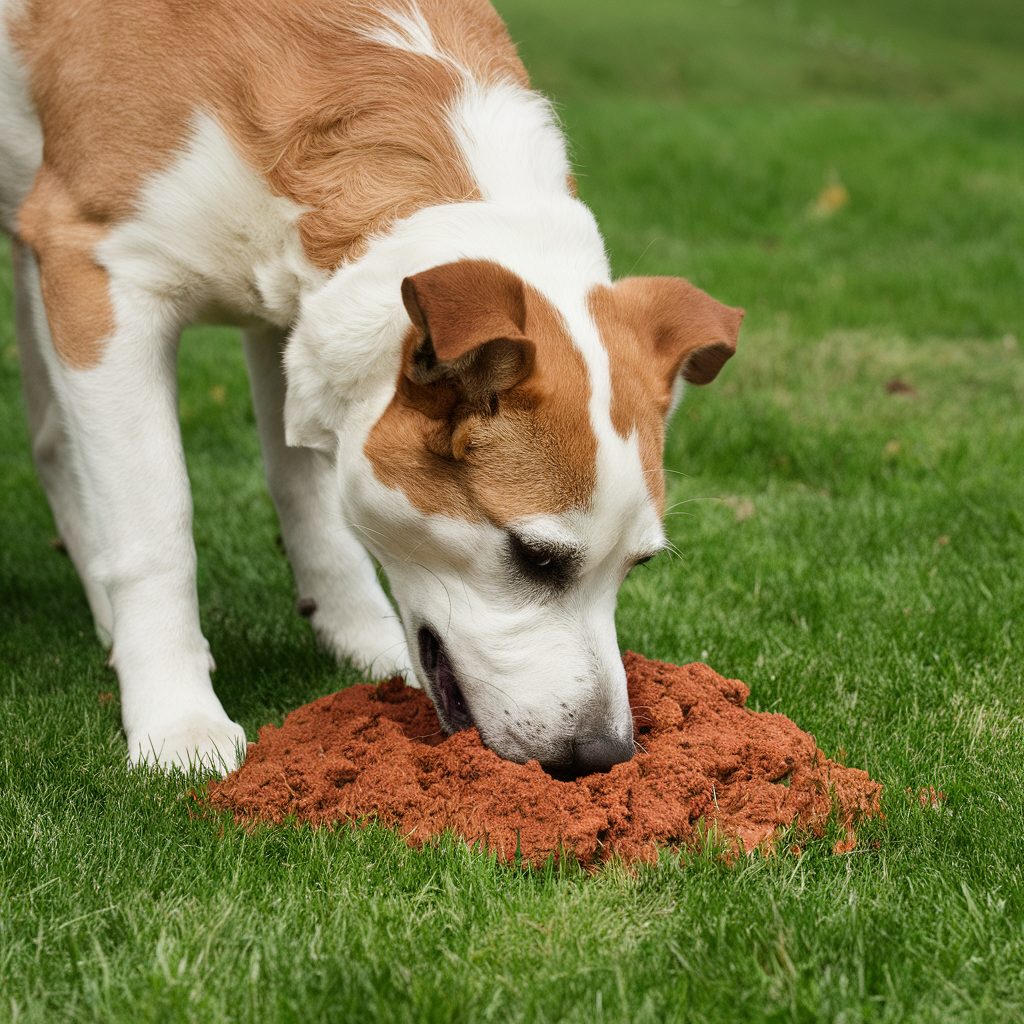Dogs bury their treats for a variety of reasons often rooted in their natural instincts and behaviour. This practice known as caching stems from their wild ancestors who needed to save excess food for times of scarcity.
By burying treats, dogs emulate this survival strategy, ensuring they have a hidden reserve for later consumption. Additionally, burying treats can be a way for dogs to protect their prized possessions from other animals or perceived threats.
Understanding this behaviour provides insight into the instinctual actions of dogs and highlights the fascinating ways in which domestic dogs still retain traits from their wild counterparts.
Why do dogs bury food?
Top Reasons Why Dogs Bury Their Food
Instinctual Behaviour
Dogs are domesticated descendants of wild canines, such as wolves and foxes. In the wild, these animals often must hunt for their food and may not know when their next meal will come. To ensure they have enough to eat during times of scarcity, they bury their food. This behaviour, known as "caching," helps preserve the food by keeping it out of sight from other animals and preventing it from spoiling quickly. Even though domestic dogs typically have a steady food supply, this instinct can still manifest in the form of burying treats.
Observations in Domestic Dogs: You might notice that certain breeds or individual dogs exhibit this behaviour more frequently. Breeds with a strong prey drive, such as terriers or hounds, might be more inclined to bury treats because of their historical roles in hunting and scavenging.
Security
Burying treats can make dogs feel more secure about their food supply. By hiding their treats, dogs may be trying to protect their resources from potential thieves. In a multi-pet household, for instance, a dog might bury its treats to keep them away from other pets. This behaviour ensures that the dog can enjoy its treat later without the risk of it being taken away.
Anxiety and Insecurity: Dogs that have experienced food scarcity or competition in the past may be more prone to burying their treats. Rescue dogs, or those from environments where food was limited, often display this behaviour as a coping mechanism for their past experiences.
Overabundance
When dogs have more treats than they can consume at once, they might bury some of them to save for later. This is particularly common in situations where a dog receives multiple treats or has access to a large amount of food. The behaviour is a way to manage surplus resources, ensuring they can be enjoyed at a future time when food might not be as readily available.
Managing Excess: Owners can manage this by offering treats in smaller quantities or using treat-dispensing toys that challenge dogs to work for their rewards, mimicking the effort they would expend in the wild to obtain food.
Playfulness
For some dogs, the act of digging and burying is simply fun. It can be an enjoyable and stimulating activity that provides both mental and physical exercise. The process of burying a treat involves planning and problem-solving, which can be mentally engaging for a dog. This behaviour can be part of their natural play, offering a way to expend energy and satisfy their curiosity.
Variety in Activities: Incorporate a variety of games and exercises into your dog’s routine to keep them engaged. Activities like hide-and-seek with toys, agility training, and interactive play can help fulfill their need for stimulation.
Territorial Behaviour
Dogs are naturally territorial animals. By burying treats, they might be marking their territory and asserting ownership over their resources. This behaviour can be a way of communicating to other animals that a certain area belongs to them and that the buried treats are theirs. It’s a way of establishing dominance and control over their environment.
Social Dynamics: Understanding your dog's social dynamics within the household can help address territorial behaviours. Providing individual spaces for each pet to enjoy their treats can reduce competition and stress.
Comfort and Satisfaction
The act of burying treats can provide dogs with a sense of comfort and satisfaction. It can be a calming activity that helps them feel in control. For some dogs, the process of finding a good spot, digging, and covering up the treat is a soothing ritual that gives them a sense of accomplishment. This behaviour can be especially pronounced in dogs that have been through periods of food insecurity or stress.
Calming Effects: Like how humans find certain repetitive actions calming, dogs can derive comfort from burying treats. This can be especially beneficial for dogs that experience anxiety or stress.

Top 8 Burying Dog Breeds That Love to Hide Their Treats
Certain dog breeds are more inclined to bury their treats due to their instincts and historical roles. These breeds often have a strong prey drive, digging tendencies, or behaviours rooted in their working backgrounds.
Here are some breeds that are more likely to exhibit burying behaviour:
1. Terriers
Terriers were bred for hunting and digging out burrowing animals. Their natural digging instincts make them more likely to bury their treats. Examples: Jack Russell Terrier, Scottish Terrier, Yorkshire Terrier
2. Hounds
Hounds, especially those bred for hunting and tracking, may bury their food as part of their instinct to save their catch for later. Examples: Beagle, Basset Hound, Bloodhound
3. Siberian Huskies
Siberian Huskies, originally used for sledding and surviving in harsh conditions, have strong survival instincts, which include burying food to save for lean times.
4. Dachshunds
Dachshunds were bred to hunt badgers and other burrowing animals. Their strong digging instincts can lead them to bury treats and toys.
5. Retrievers
While not typically known for digging, retrievers like Labrador and Golden Retrievers may bury treats as a way of protecting their resources, especially in multi-pet households.
6. Chihuahuas
Despite their small size, Chihuahuas can display strong territorial behaviour and might bury their treats to hide them from perceived threats.
7. Shiba Inus
Shiba Inus, with their independent and sometimes territorial nature, might engage in burying treats to assert ownership and protect their resources.
8. Australian Shepherds and Border Collies
These intelligent and energetic herding breeds may bury treats to engage their active minds and expend energy.
Factors Influencing Dog Burying Behaviour
While breed tendencies play a significant role, individual dogs within any breed can exhibit burying behaviour based on various factors:
Personality: Some dogs, regardless of breed, may have a more pronounced instinct to bury food due to their individual personalities and past experiences.
Environment: Dogs in environments where they feel insecure or where there is competition for resources may be more likely to bury treats.
Training and Socialization: Dogs that have not been properly socialized or trained may develop habits like burying treats as a coping mechanism.
Past Experiences: Dogs that have experienced scarcity or competition in their past (e.g., rescue dogs) may be more prone to burying food.
Practical Tips for Owners
- Provide Mental Stimulation: Ensure your dog has plenty of toys and activities to keep their mind engaged. Puzzle toys and interactive games can help reduce the need to bury treats for mental stimulation.
- Monitor Food Intake: If your dog is burying treats because they have an overabundance, try to regulate the amount of treats you give them. Offer treats in moderation and ensure they are part of a balanced diet.
- Safe Spaces: Create a safe and secure environment for your dog. If they feel their resources are threatened, providing a private and quiet space for them to enjoy their treats can reduce the need to bury them.
- Training and Guidance: Train your dog with positive reinforcement techniques to discourage excessive burying if it becomes problematic. Reward them for eating treats right away and guide them towards appropriate behaviours.
- Observation and Adaptation: Pay attention to your dog's behaviour and adjust your approach accordingly. If burying treats becomes excessive or problematic, consider consulting a veterinarian or a professional dog trainer for advice.
- Addressing Anxiety: If your dog’s burying behaviour is rooted in anxiety or past trauma, providing a stable, predictable environment, and possibly consulting with a veterinarian for behavioural therapy can help.
Conclusion
The behaviour of dogs burying their treats is a fascinating blend of instinct and practicality. Rooted in their ancestral need to survive periods of scarcity, this habit showcases their natural caching behaviour. Additionally, it serves as a protective measure, allowing them to secure their valuable resources from potential threats.
By recognising and understanding this behaviour, dog owners can better appreciate the deep-seated instincts that drive their pets, fostering a deeper bond and respect for their furry companions.
By recognising and respecting these natural behaviours, dog owners can create a harmonious environment that satisfies their pets' instincts while maintaining household harmony.



